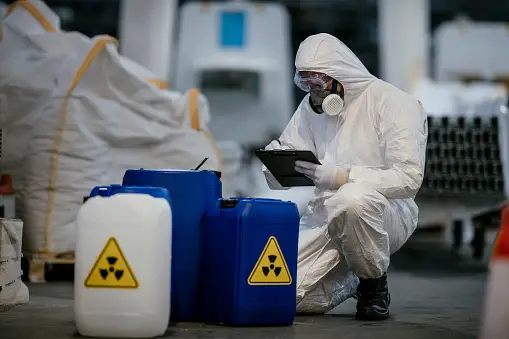Hazardous waste disposal is a critical and complex issue that poses significant risks to public health and the environment. With the constant advancement of industrial activities and technological progress, the generation of hazardous waste has reached an alarming level. The improper management and disposal of these hazardous materials can cause severe contamination of air, water, and soil, leading to long-term consequences for both humans and ecosystems.
The proper handling and disposal of hazardous waste require careful attention, adherence to regulations, and the implementation of effective waste management practices. This article will delve into the various aspects of hazardous waste disposal, discussing the types and sources of hazardous waste, the dangers they present, as well as the strategies and technologies employed for safe disposal. Furthermore, it will shed light on the importance of promoting awareness and responsibility among industries, governments, and individuals in ensuring proper hazardous waste management for a sustainable future.

The Types and Sources of Hazardous Waste
Hazardous waste can come from a variety of sources, including industrial activities, healthcare facilities, research laboratories, and households. Common types of hazardous waste include chemicals, solvents, heavy metals, radioactive materials, pharmaceuticals, and biological waste. These substances can be harmful to human health and the environment if not handled and disposed of properly.
In the healthcare sector, for example, medical facilities generate a significant amount of hazardous waste such as sharps (needles, syringes), expired medications, and contaminated materials. The proper management of medical waste is crucial to prevent infections and protect both patients and healthcare workers. This is where Pensacola medical waste management plays a critical role by providing safe and compliant disposal solutions for healthcare facilities in the region.
Strategies and Technologies for Safe Disposal
The safe disposal of hazardous waste involves a combination of strategies and technologies to minimize environmental impact. One common approach is the implementation of waste reduction and recycling programs to decrease the overall volume of hazardous materials generated. Recycling allows for the reuse of certain materials, reducing the demand for new production and minimizing the need for disposal.
In addition to recycling, treatment technologies are employed to neutralize or detoxify hazardous substances before their ultimate disposal. These technologies range from physical methods such as incineration or thermal treatment to chemical processes like precipitation or oxidation. By utilizing these advanced technologies, hazardous waste can be rendered less harmful or even inert before being disposed of in a controlled manner. Overall, the adoption of innovative strategies and technologies is crucial for ensuring effective and environmentally friendly hazardous waste management.
Proper hazardous waste management is essential for a sustainable future and the protection of public health and the environment. The types and sources of hazardous waste vary widely, including chemicals, solvents, heavy metals, radioactive materials, pharmaceuticals, and biological waste. These substances can have severe repercussions if not handled and disposed of correctly. For instance, medical facilities generate a significant amount of hazardous waste, such as sharps and expired medications, making proper medical waste management crucial to prevent infections and protect patients and healthcare workers.
To ensure safe disposal, strategies such as waste reduction and recycling programs are employed to decrease the overall volume of hazardous materials generated. Recycling allows for the reuse of certain materials, reducing the demand for new production and minimizing the need for disposal. Additionally, treatment technologies play a vital role in neutralizing or detoxifying hazardous substances before their ultimate disposal. These technologies range from physical methods like incineration or thermal treatment to chemical processes like precipitation or oxidation. By utilizing these advanced technologies, hazardous waste can be rendered less harmful or even inert before being disposed of in a controlled manner.
In conclusion, promoting awareness and responsibility among industries, governments, and individuals is crucial for effective hazardous waste management. Implementing proper handling and disposal practices while utilizing innovative strategies and technologies will minimize the risks posed by hazardous waste and contribute to a sustainable future for both humans and ecosystems.
